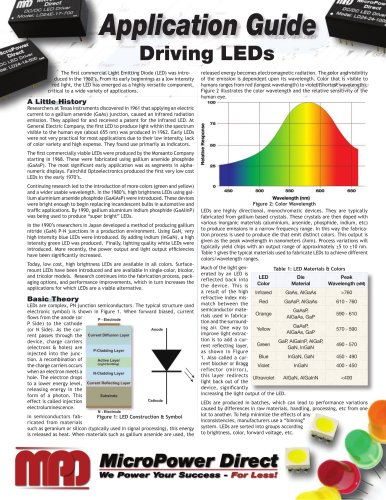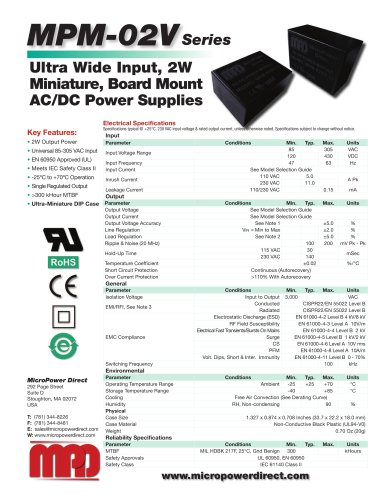Driving LED0 pages
Driving LEDs table.main {} tr.row {} td.cell {} div.block {} div.paragraph {} .font0 { font:29.00pt "Arial", sans-serif; } .font1 { font:13.00pt "Arial Black", sans-serif; } .font2 { font:4.00pt "Lucida Sans Unicode", sans-serif; } .font3 { font:5.00pt "Lucida Sans Unicode", sans-serif; } .font4 { font:6.00pt "Lucida Sans Unicode", sans-serif; } .font5 { font:7.00pt "Lucida Sans Unicode", sans-serif; } .font6 { font:8.00pt "Lucida Sans Unicode", sans-serif; } .font7 { font:11.00pt "Lucida Sans Unicode", sans-serif; } .font8 { font:25.80pt "Lucida Sans Unicode", sans-serif; } .font9 { font:29.00pt "Lucida Sans Unicode", sans-serif; } .font10 { font:4.00pt "Trebuchet MS", sans-serif; } .font11 { font:5.00pt "Trebuchet MS", sans-serif; } .font12 { font:6.00pt "Trebuchet MS", sans-serif; } .font13 { font:7.00pt "Trebuchet MS", sans-serif; } .font14 { font:11.00pt "Trebuchet MS", sans-serif; } P WfflVDirect f A Driving leds The first commercial Light Emitting Diode (LED) was intro-duced in the 1960's. From its early beginnings as a low intensity released energy becomes electromagnetic radiation. The color and visibility of the emission is dependent upon its wavelength. Color that is visible to humans ranges from red (longest wavelength) to violet (shortest wavelength). Figure 2 illustrates the color wavelength and the relative sensitivity of the human eye. red light, the LED has emerged as a highly versatile component, critical to a wide variety of applications. I * * r A Little History Researchers at Texas Instruments discovered in 1961 that applying an electric current to a gallium arsenide (GaAs) junction, caused an infrared radiation emission. They applied for and received a patent for the infrared LED. At General Electric Company, the first LED to produce light within the spectrum visible to the human eye (about 655 nm) was produced in 1962. Early LEDs were not very practical for most applications due to their low intensity, lack of color variety and high expense. They found use primarily as indicators. The first commercially viable LEDs were produced by the Monsanto Company starting in 1968. These were fabricated using gallium arsenide phosphide (GaAsP). The most significant early application was as segments in alpha-numeric displays. Fairchild Optoelectronics produced the first very low cost LEDs in the early 1970's. Continuing research led to the introduction of more colors (green and yellow) and a wider usable wavelength. In the 1980's, high brightness LEDs using gallium aluminium arsenide phosphide (GaAlAsP) were introduced. These devices were bright enough to begin replacing incandescent bulbs in automotive and traffic applications. By 1990, gallium aluminium indium phosphide (GaAlInP) was being used to produce "super bright" LEDs. In the 1990's researchers in Japan developed a method of producing gallium nitride (GaN) P-N junctions in a production enwonment. Using GaN, very high intensity blue LEDs were introduced. By adding indium (InGaN), a high intensity green LED was produced. Finally, lighting quality white LEDs were introduced. More recently, the power output and light output efficiencies have been significantly increased. Today, low cost, high brightness LEDs are available in all colors. Surface-mount LEDs have been introduced and are available in single-color, bicolor, and tricolor models. Research continues into the fabrication process, packͭaging options, and performance improvements, which in turn increases the applications for which LEDs are a viable alternative. Basic Theory LEDs are complex, PN junction semiconductors. The typical structure (and electronic symbol) is shown in Figure 1. When forward biased, current u> c o CL a ce 450 500 550 600 650 Wavelength (nm) Figure 2: Color Wavelength LEDs are highly directional, monochromatic devices. They are typically fabricated from gallium based crystals. These crystals are then doped with various inorganic materials (aluminium, arsenide, phosphide, indium, etc) to produce emissions in a narrow frequency range. In this way the fabrication process is used to produce die that emit distinct colors. This output is given as the peak wavelength in nanometers (̀nm). Process variations will typically yield chips with an output range of approximately ±5 to ±10 nm. Table 1 gives the typical materials used to fabricate LEDs to achieve different colors/wavelength ranges. Much of the light gen-erated by an LED is reflected back into the device. This is a result of the high refractive index mis-match between the semiconductor materials used in fabricaͭtion and the surround-ing air. One way to improve light extraction is to add a cur-rent reflecting layer, as shown in Figure 1. Also called a cur-rent blocker or Bragg reflector (mirror), this layer redirects light back out of the device, significantly Table 1: LED Materials & Colors LED Color Die Material Peak Wavelength (nM) Infrared GaAs, AIGaAs >760 Red GaAsP, AIGaAs 610 - 760 Orange GaAsP, AIGaAs, GaP 590 - 610 Yellow GaAsP, AIGaAs, GaP 570 - 590 Green GaP, AIGaInP, AIGaP, GaN, InGaN 490 - 570 Blue InGaN, GaN 450 - 490 Violet InGaN 400 - 450 Ultraviolet AIGaN, AIGaInN <400 flows from the anode (or P - Electrode P Side) to the cathode (or N Side). As the cur-rent passes through the device, charge carriers (electrons & holes) are injected into the junc-tion. A recombination of the charge carriers occurs when an electron meets a hole. The electron drops to a lower energy level, releasing energy in the form of a photon. This effect is called injection electroluminescence. Current Diffusion Layer P-CIadding Layer Active Layer (Light t iii itl ii ■ cj :■ N-Cladding Layer Current Reffecting Layer Cathode increasing the light output of the LED. LEDs are produced in batches, which can lead to performance variations N - Electrode Figure 1: LED Construction & Symbol caused by differences in raw materials, handling, processing, etc from one lot to another. To help minimize the effects of any inconsistencies, manufacturers use a "binning" system. LEDs are sorted into groups according to brightness, color, forward voltage, etc. In semiconductors fab- ricated from materials such as geranium or silicon (typically used in signal processing), this energy is released as heat. When materials such as gallium arsenide are used, the MicroPower Direct \ We Power Your Success - For Lessf
"
 عضویت
عضویت  ورود اعضا
ورود اعضا راهنمای خرید
راهنمای خرید


























































